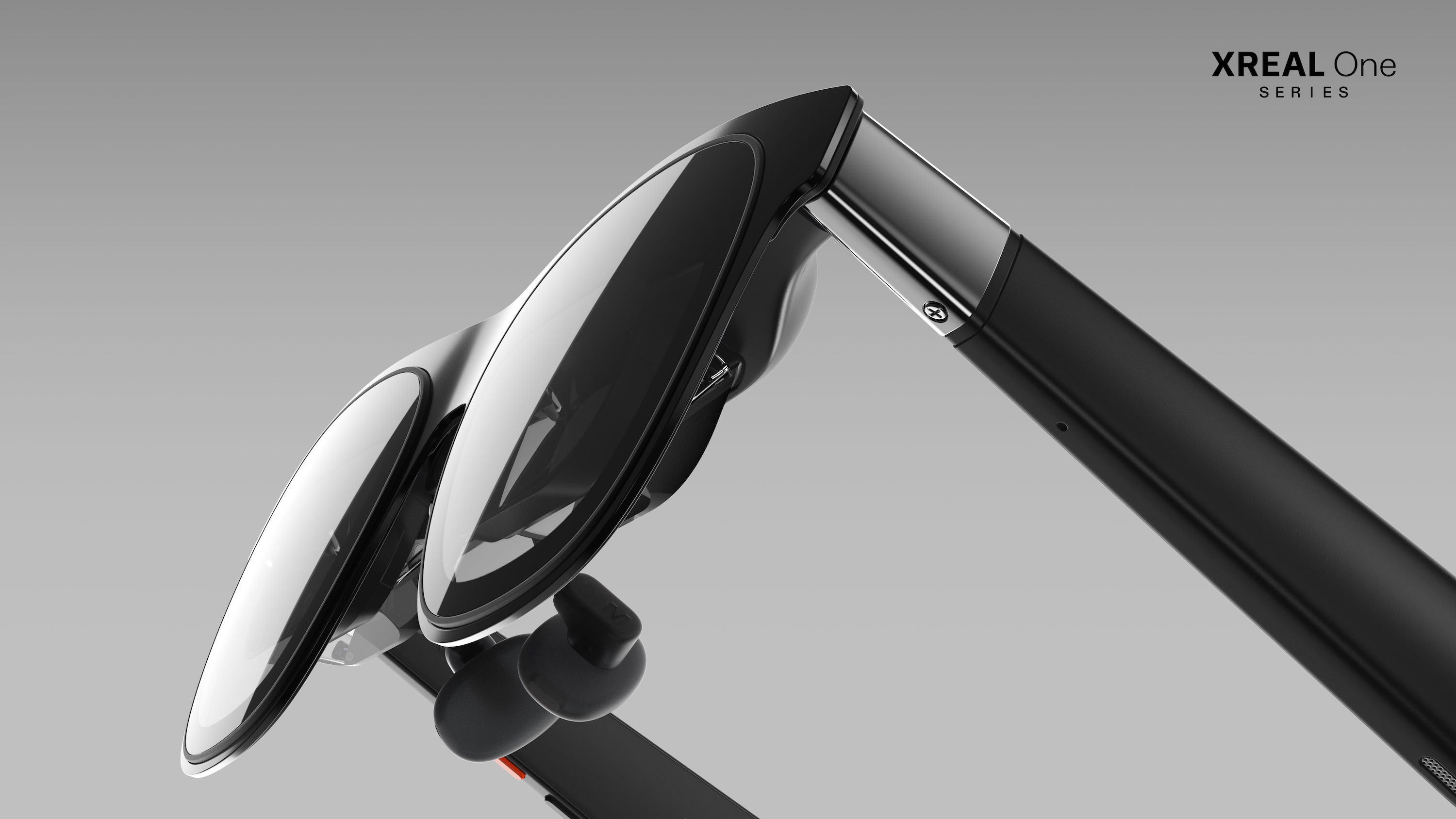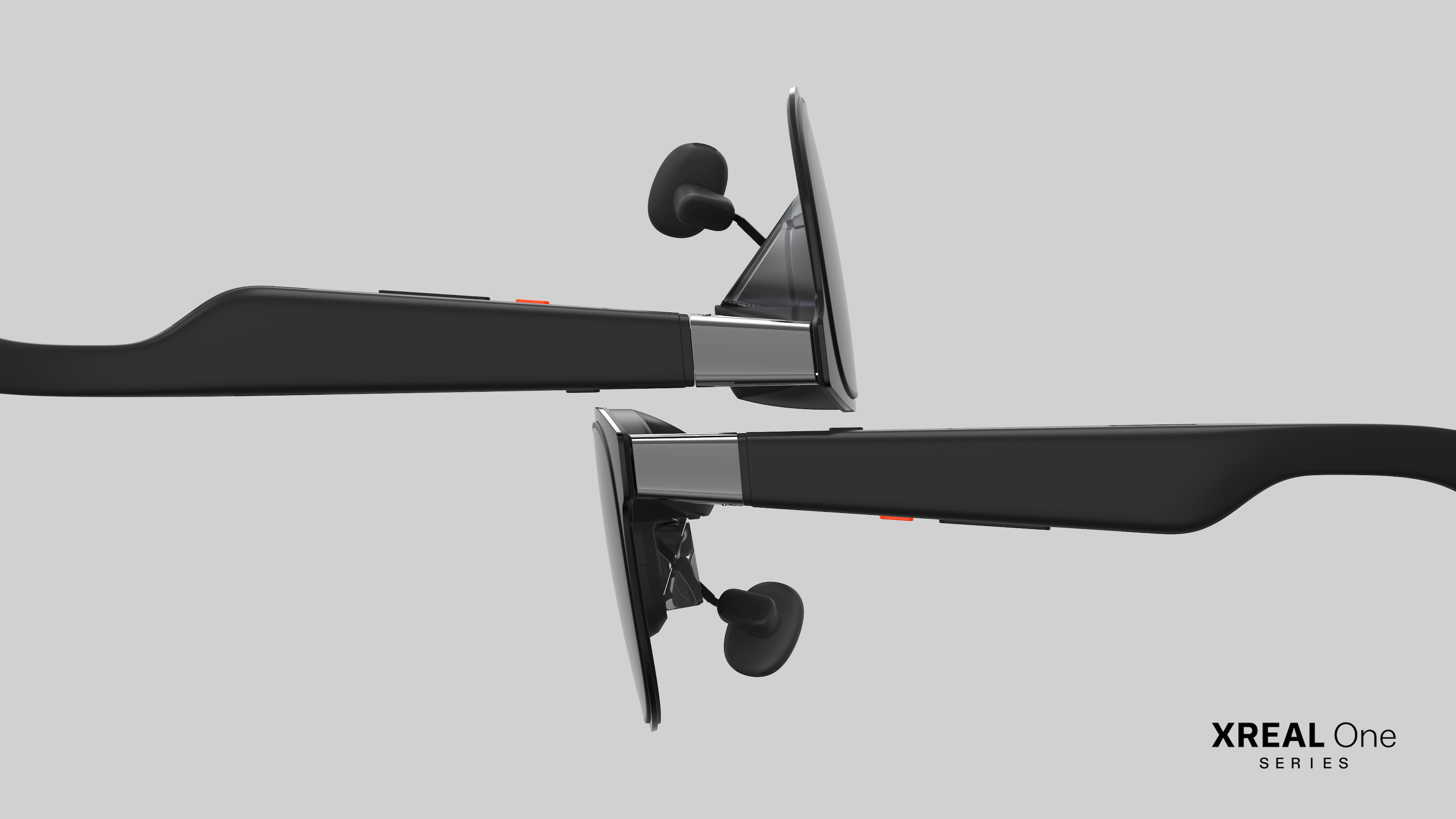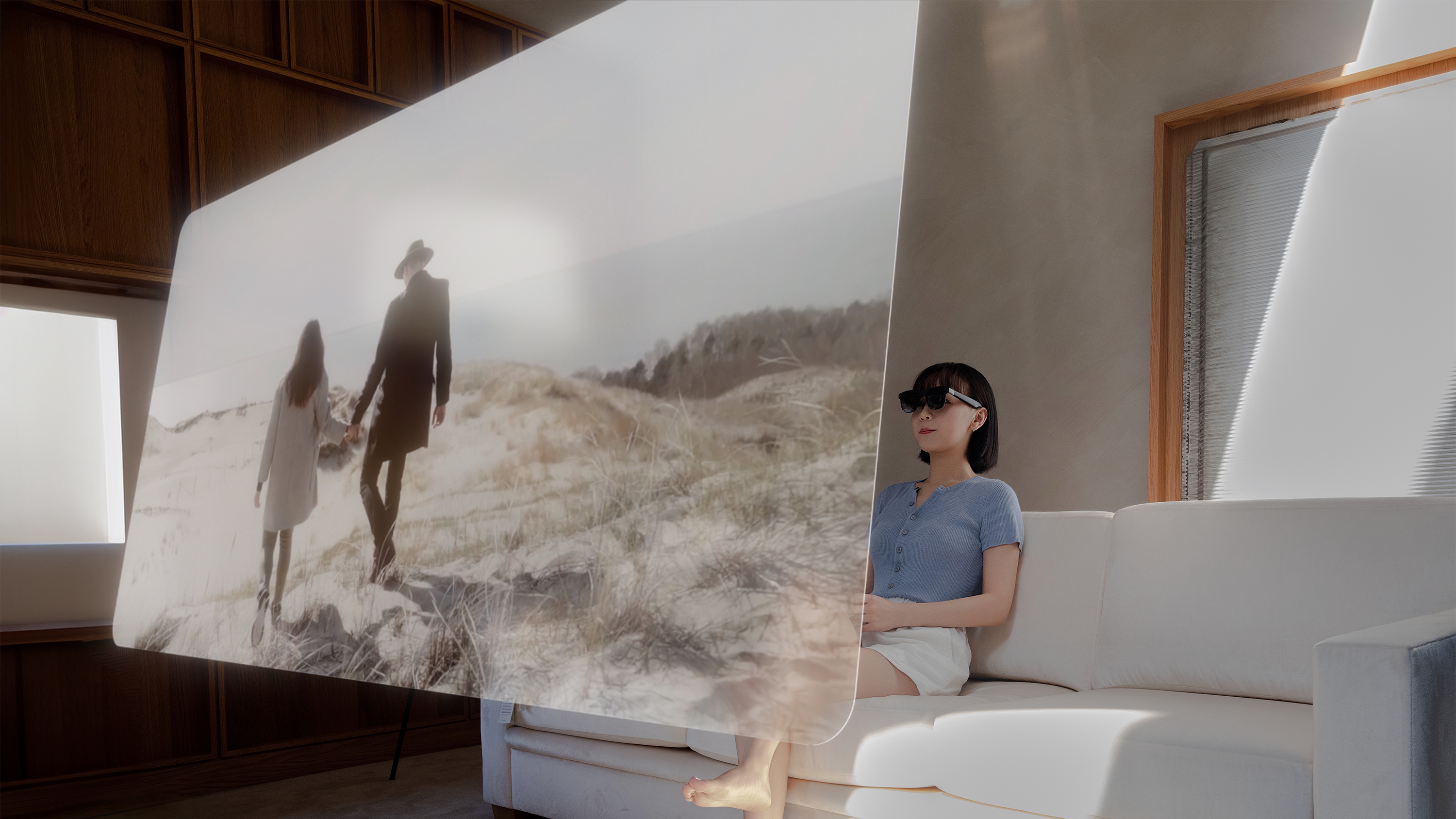
What you need to know
- Xreal announced two new AR glasses on Wednesday, the Xreal One and Xreal One Pro, both with 3DoF spatial computing.
- They can anchor a 146- or 171-inch extended display in 3D space for your Android phone, Steam Deck, PC, iPhone, or MacBook.
- A new Xreal Eye Camera can capture 12MP photos for "multimodal AI capabilities" connected to your phone.
- Other new perks include wider FOV, improved brightness, Sound by Bose, and certifications for visibility and eye comfort.
Meta reminded the world of AR glasses' potential when it revealed its Orion glasses prototype this September, but you don't need to wait until 2027 to try out augmented reality for yourself. Xreal, one of our favorite brands for at-home cinematic AR, announced two new devices that inch closer to the field of view (FoV) and smarts necessary to make AR glasses more widely popular.
The Xreal One and One Pro are both 3DoF spatial glasses, meaning you can place a virtual screen in 3D space and then move or tilt your head freely while the screen remains anchored in place, instead of the screen following and blocking your vision. Its past glasses needed the $199 Beam Pro accessory to add spatial support.
The motion-to-photon latency is only 3ms at 120Hz, meaning if you move your head, no noticeable delay or blur affects the display as it shifts to its proper, anchored place.
While the Xreal Air 2 and 2 Pro glasses had a relatively narrow 46-degree FoV that could support a 133-inch virtual display, the Xreal One jumps to 50º/ 146 inches and the Pro to 57º/ 171 inches, dwarfing whatever massive TVs millionaires have in their homes. The excellent RayNeo Air 2S XR glasses match the Xreal One with a 120Hz, 600-nit display, but those also have a 46-degree limit.


AR glasses today make you feel like you're looking at things through a narrow box, and it's easy to lose track of things. While they're not quite at the level of Meta's 70-degree prototypes, Xreal One has gotten closer to the display width we're waiting for, and it has "three-level temple adjustments" to "find the right vertical IPD setting," so you don't have to tilt your head to keep things in view.
Many Xreal users have complained about the Air 2's IPD width matching their eyes. The Xreal One uses "software-based adjustable IPD," while the One Pro has two IPD size options: 57–66mm and 66–75mm. Xreal also promises that the One series will be more comfortable than past models, with a 5-star TÜV Rheinland rating for Eye Comfort and certification for High Visibility and Low Blue-Light.
The brightness and resolution of these AR glasses aren't especially high, but you get the convenience of working or gaming while flying, or playing Steam Deck games in bed with much more screen space than usual. And the Xreal One Pro offers 700 nits of perceived brightness, a 200-nit jump over the last-gen glasses.
Xreal also intends to improve the audio quality of these glasses with Sound by Bose certification, promising "superior mid-to-high frequencies" compared to the last generation.

While Xreal glasses are primarily designed for at-home use, the Xreal One series also supports a detachable 1MP RGB camera that can take HD photos or record 1080p video at 60FPS. It will support image recognition and voice commands, adding the kind of AI tricks popularized by the Meta Ray-Ban smart glasses. This update will arrive sometime "after launch."
If I have one concern about the Xreal One series, it's that they weight 84g and 87g for the standard and Pro models, which is about 10g heavier than previous Xreal Airs and about an ounce heavier than Meta Ray-Bans. You may end up having an issue with them sliding down your nose frequently, unless they're fitted very well.
The Xreal One costs $499/ £449/ €549 and ships in mid-December, while the Xreal One Pro costs $599/ £549/ €649 and ships in early 2025; you can preorder both from Xreal or on Xreal's Amazon page. Both glasses will be available in the U.S., U.K., France, Germany, Italy, Czech, Netherlands, China, Japan, and Korea.







